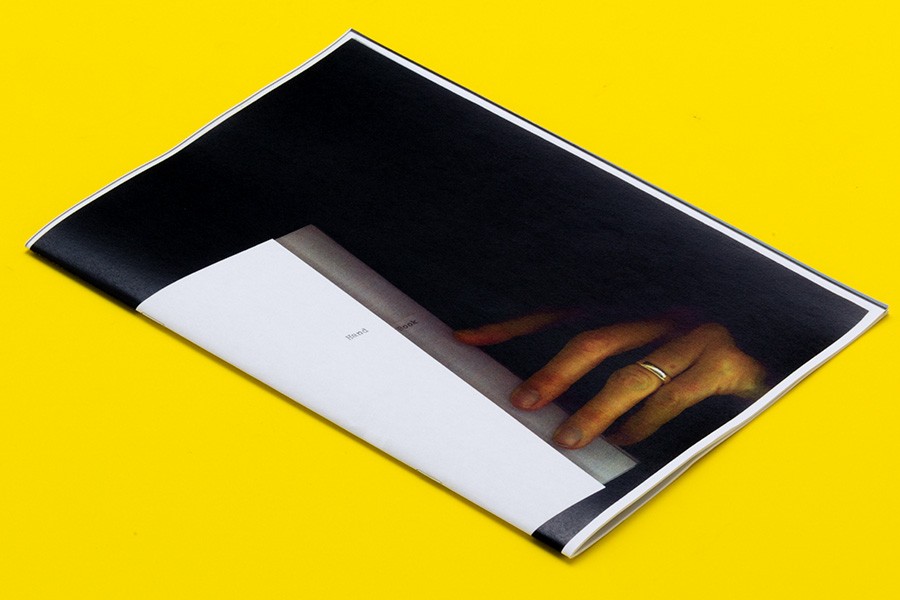
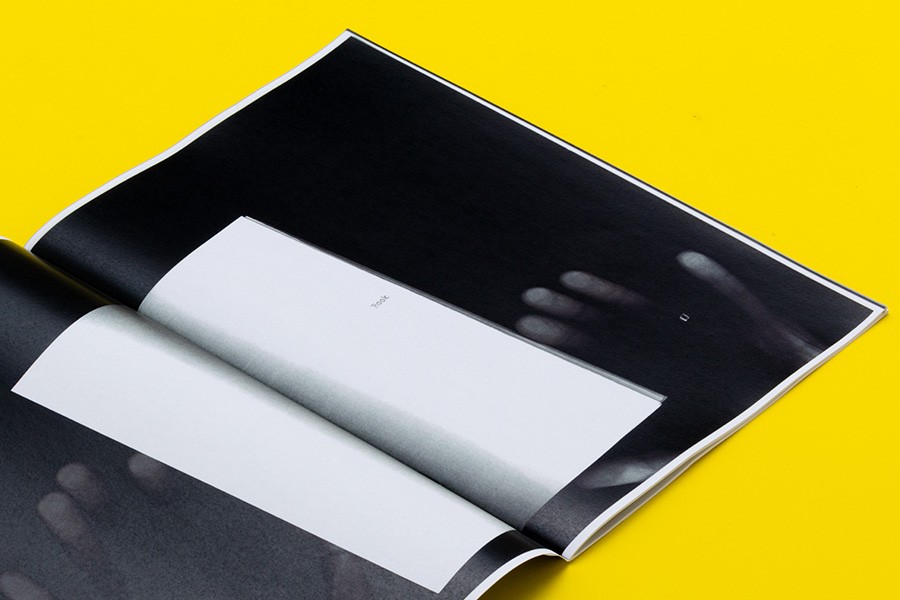
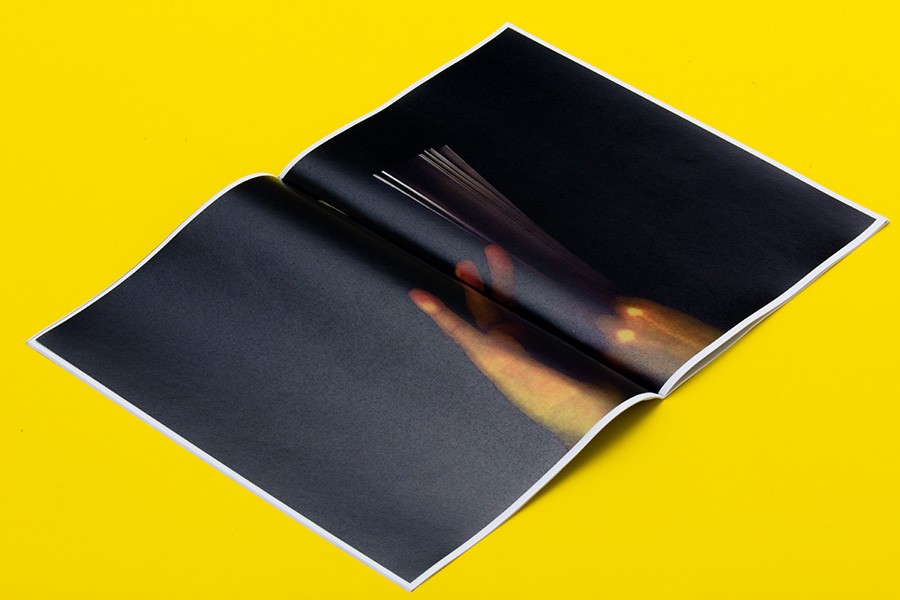
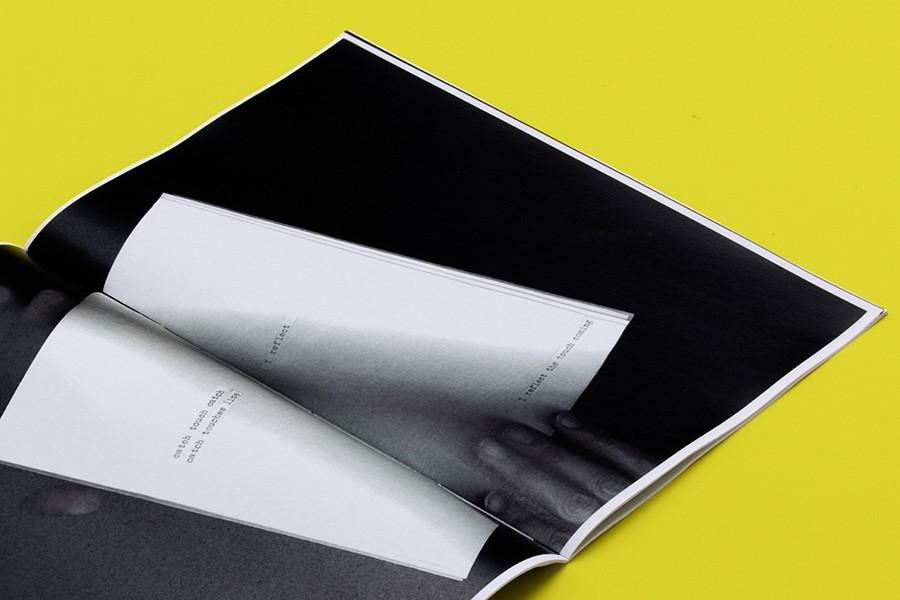
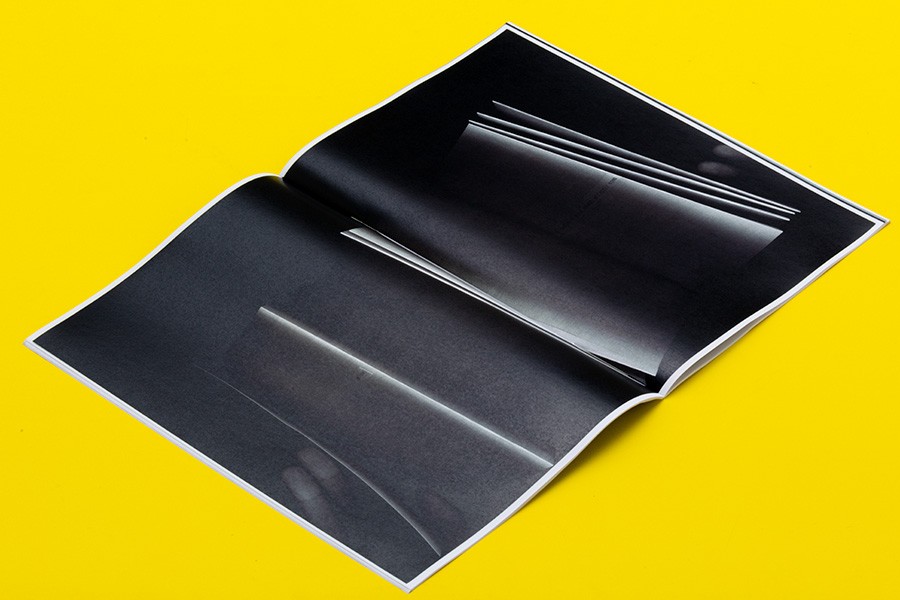
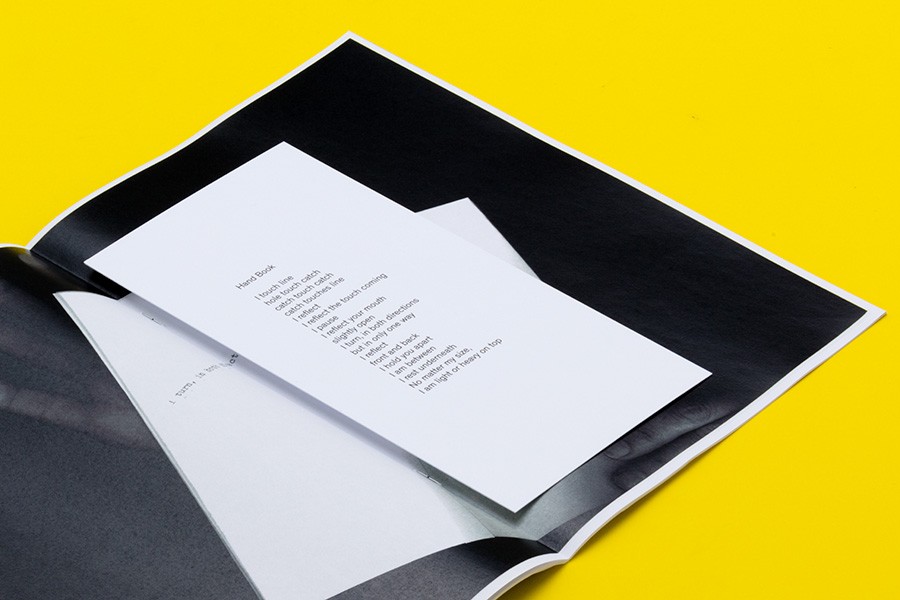
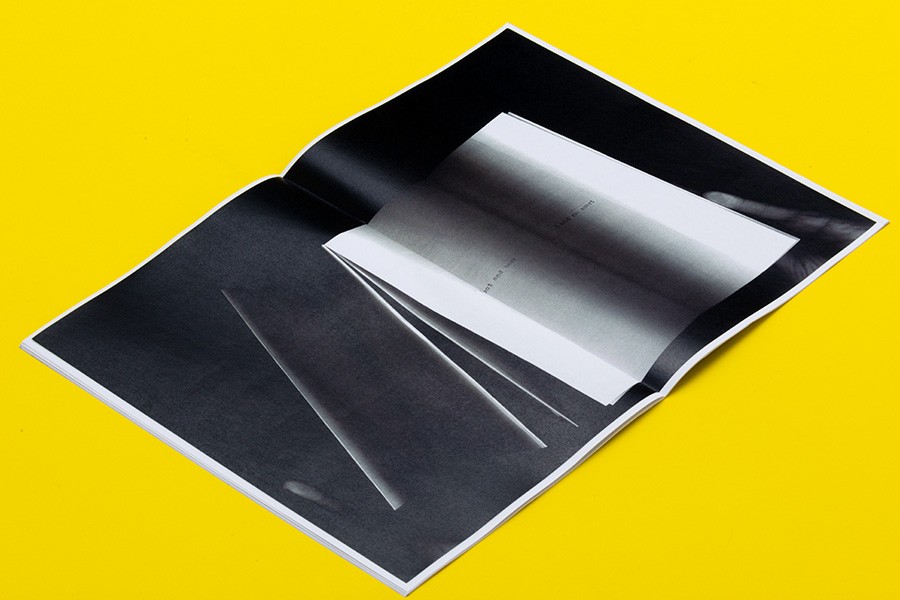
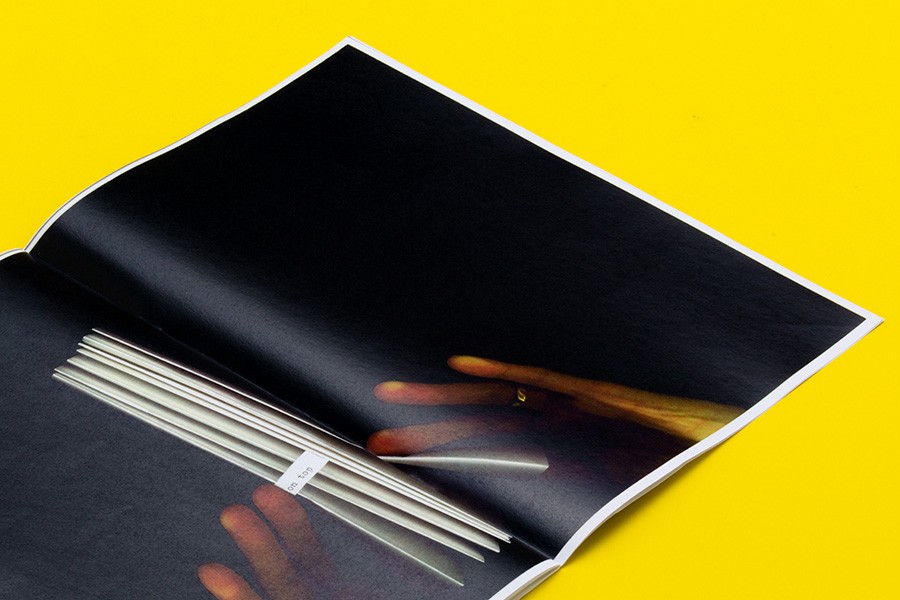
Hand Book
Artists: Elizabeth Lebon & Katalin Deér
Designer: Izet Sheshivari
Softcover, 36 Pages + insert
Format: 21 × 29.7 mm
Colors Offset
First Edition 2019
Boabooks 101
Price CHF 18
Hands touch, grasp, catch, to the rhythm of the page. They draw the line they grasp. The contact they reflect. They echo the Italian Renaissance and the Quattrocento. The title Hand Book takes us back to this position of capture: hands placed on the pages of a book. A poem at its centre, soft and erotic. Slightly open (v. 9), I rest underneath (v. 16). The essential question of choice arises. A poem typed, then cut and pasted, Elizabeth Lebon’s hands create the layout of the book. The poem, the words on the page, the pages forming a leporello. Held by hands, pairs of hands, palms. These hands in the light appear against a black background, reminding us of the contrasts and paintings of Caravaggio. As the pages turn, a poem appears, printed on a cardboard aside I hold you apart (v. 14). A poem about love and hands. These are photocopies of the hands front and back, they are copies of love. The photographs are by Katalin Deér, the poem by Elizabeth Lebon.
The black background of the artist’s book is enhanced by a white border and a 4 mm margin. Elizabeth Lebon uses the typewriter - the driving force behind her work - in her daily practice, in line with the work of Ulises Carrión. Katalin Deér is an architectural photographer who works with the idea of documenting the same place, the same point of contact. Landscape and architecture merge.
Annamira Jochim, in her essay «Thought Figures of Drawing: Holding one’s eyes in one’s hands» on the work of Miriam Sturzenegger (The Fog is a Light Darkness / Der Nebel ist ein helles Dunkel, Boabooks, 2010, p. 249), echoes the book by Elizabeth Lebon and Katalin Deér: Hands reach out, trying to grasp a form but it evaporates, eluding both physical and mental grasp. The hands explore the paper, trying to find something.
The book was designed by Elizabeth Lebon. She glued typographic elements on the leporello. Katalin Deér made photocopies of her hands on Elizabeth Lebon’s book. Izet Sheshivari made reproductions to edit the book. Katalin Deér used the photocopier as a camera. The position of Katalin Deér’s hands when she made the photocopies became part of the poem. A dialectic was created between Katalin Deér and Elizabeth Lebon: seeing the images of the books created and working on reproducing these images. The margins were preserved in the printing process and vary slightly from two to four millimetres. This makes the reader aware that the original single book has been photocopied. The black background of the photographs is the result of photocopying the void, the space.
FR
Des mains touchent, saisissent, attrapent, au rythme de la page. Elles dessinent la ligne qu’elles saisissent. Elles font écho à la Renaissance italienne et au Quattrocento. Hand Book nous ramène à cette position de capture: des mains posées, déposées sur les pages d’un livre. Un poème en son centre, la question du choix, se pose. Tapé à la machine, puis découpé et collé, les mains d’Elizabeth Lebon créent la mise en page du livre. Les mots sur la page, les pages formant un leporello.
Tenu par des mains, des couples de mains. Les paumes apparaissent sur un fond noir à la lumière.
Elizabeth Lebon fait usage au quotidien, de la machine à écrire — élément moteur du travail — et s’inscrit dans une continuité. Katalin Deér est une photographe architecte travaillant sur la notion de collection et de répétition d’un lieu, didactique des points de vues. Paysage et architecture se confondent.
Annamira Jochim dans son essai Thought Figures of Drawing: Holding one’s eyes in one’s hands sur l’œuvre de Miriam Sturzenegger (The Fog is a Light Darkness / Der Nebel ist ein helles Dunkel, Boabooks, 2010 p. 249) fait écho au livre d’Elizabeth Lebon et de Katalin Deér: Hands reach out, trying to grasp a form but it evaporates, eluding both physical and mental grasp. The hands explore the paper, trying to find something.
Elizabeth Lebon a collé son texte sur son leporello. Katalin Deér photocopies ses mains sur le leporello d’Elizabeth Lebon. La photocopieuse est son appareil photographique. Les positions des mains de Katalin Deér sont un jeu de prise de vue. Une dialectique se crée entre Katalin Deér et Elizabeth Lebon: voir les images des livres créés, et travailler à la reproduction de ces images. Les marges rendent compte que le livre unique original a été photocopié. Le fond noir des vues est du vide, de l’espace autour du livre.
Elizabeth Lebon a publié: Various small books, 2023; The Edges, 2018; The Book of Ghost, 2017; 200 Memories, 2016; Spooool, 2015; Twelve Tapestries, 2014.